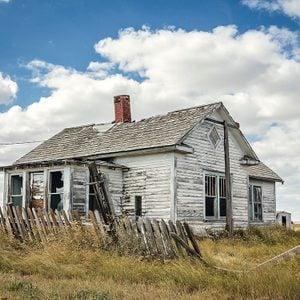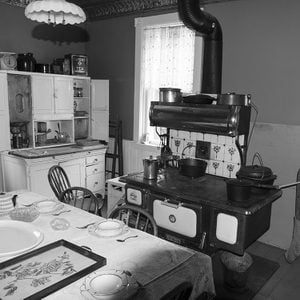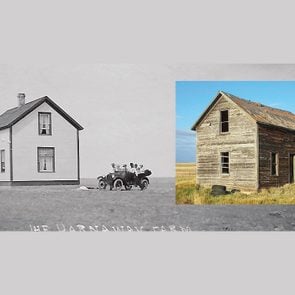The Alluring Mysteries of the Old Homestead
This charming log structure remains a striking feature on our family's Alberta farm, and poses a number of questions about the people who built it.
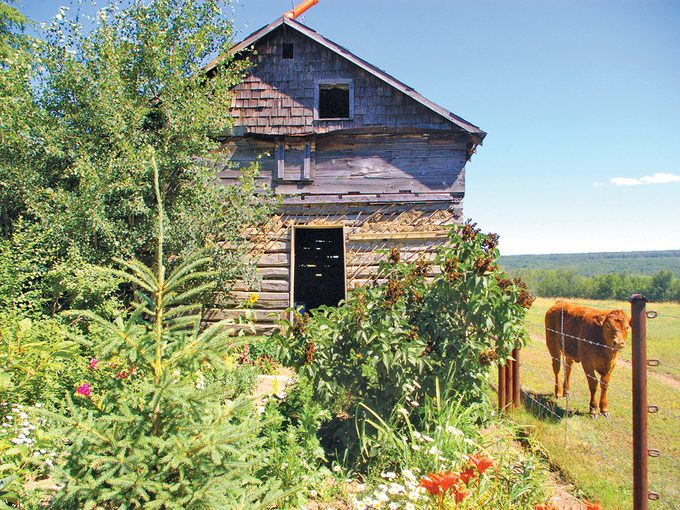
Exploring the old homestead
The old homestead is a small simple structure, made of logs that have been roughly squared off. The cracks are filled in with mud, held in place by a diagonal pattern of dried twigs. There are a few small windows and an open doorway on one side. The door itself is long gone. The home has a peaked roof covered in wooden slats above an attic space which is reached by a wooden ladder, attached to the wall, through a small opening.
The inside space is not much more than about 80-100 square feet, although I have never actually taken the time to measure it. The dirt floor is now covered in layers of cow dung as, over the past 40 years or so, it was often used as a shelter for those animals. Barn swallows have also made use of this structure as a place to build their nests.
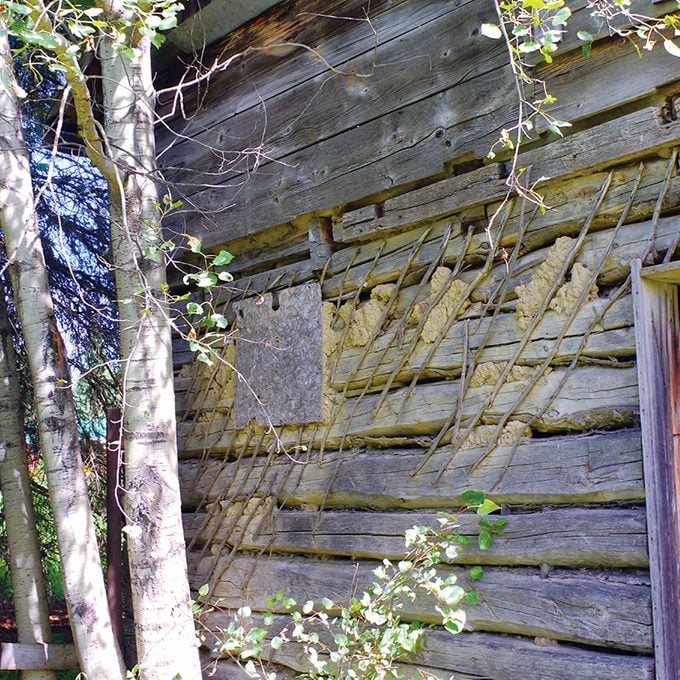
But who built it?
However, it was originally a homestead for what I assume were the first people of European descent to occupy this land. I don’t know who lived on this land in the more distant past. The Chipewyan, Chipewyan Prairie Dene, Fort McKay, and Mikisew Cree First Nations were the peoples who occupied this territory near Athabasca for millennia. But I do not know which of them occupied this piece of land. In fact, I know nothing of any of the people who lived there before my parents bought the farm more than 40 years ago.
This old homestead occupies a scenic position overlooking the Tawatinaw Valley, as does my parents’ home several hundred yards away. The view of the homestead is now largely obscured by the pine trees my father planted in the yard many years ago.
Each time I visit the farm, I photograph this old homestead, capturing the changes as well as the different seasons. It provides me with a connection to the past.
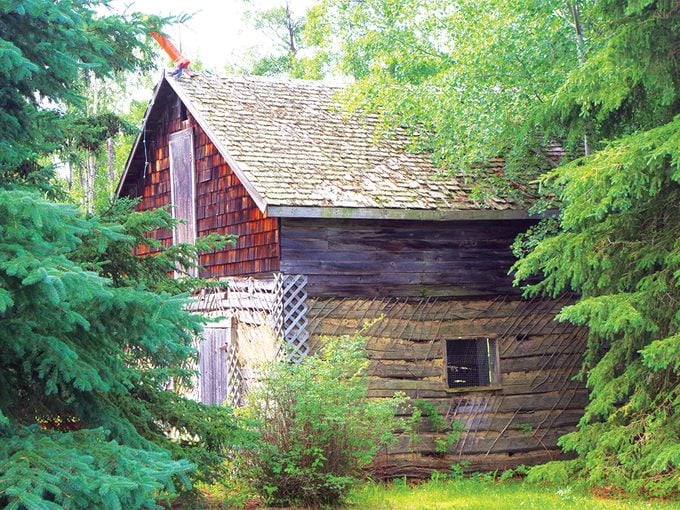
Times change
I have never been part of the vintage-style photographs that Dad and his partner Anna-Mae have taken with my nephew, Stephen, his sister, Jessica, and her friend, Katie, where they are standing in the doorway of this old log cabin. My dad and Stephen are dressed in denim overalls with pitchforks in hand. The women are dressed in dowdy looking dresses or skirts and blouses. Each of them has a dour expression on their faces. My father looks especially stern.
Apparently people didn’t smile in old photographs because the exposure was so long, they had to stand rigid lest the photograph turn out blurry. Some photographers even had a kind of head brace for their studio portraits in which they locked people to keep them still. The discomfort would be another reason not to smile. The sepia tone Anna-Mae added to those photos makes them look truly vintage, except that, of course, I know the people in them.
There is another old homestead on another part of the farm, but it is just a blocky looking structure and lacks the charm of this one, as well as the view. One thing it does have in common is the cow dung.
When Stephen was quite young, he and I were visiting the farm at the same time one summer and we took a walk around the farm. As we looked into the old log cabin, he commented how small it was. “That’s true,” I said, “but homes were extremely small at that time. For one thing, they would have been hard to heat.”
“Then where did they put the television set?” my young nephew asked.
“Oh, they certainly didn’t have television back then.”
“What?” he cried incredulously, “everyone should have a TV and a Nintendo game.”
I have no idea what those original occupants did for fun, or if they even had time for any. But I know it was not binge-watching Netflix or playing video games. Those people are long gone. Perhaps they moved into Athabasca or one of the small villages in the area. Perhaps they are buried in one of the local cemeteries, or for all we know, buried somewhere on the farm.
But wherever they or their descendants might be, they have left behind this landmark which for me is still one of the most striking features of the farm.
Next, check out a hundred-year-old mail-order house that’s still standing.
